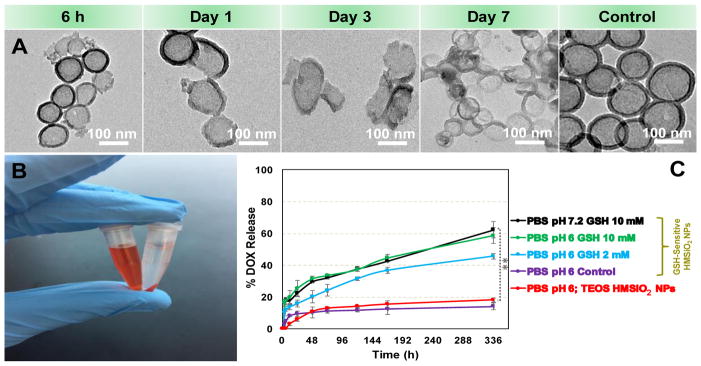Fig. 3.
(A) TEM images for the degradation of GSH-sensitive HMSiO2 NPs in the presence of 10 mM of GSH in DI water at 37 °C and pH 6 for 7 days. Control samples are the NPs dispersed in DI water at 37 °C and pH 6 after day 7 (without GSH); (B) Digital image of DOX solution (100 μg mL−1) before (left) and after (right) interaction with HMSiO2 NPs. The image was taken after mixing, washing, and precipitating the NPs via centrifugation. High loading capacity 8.9 ± 0.5% was observed with GSH-sensitive HMSiO2 NPs due to their large interior voids; (C) DOX release profile from the GSH-sensitive and TEOS HMSiO2 NPs in solutions of different pH values at 37 °C for 14 days. Control is GSH-sensitive HMSiO2 NPs dispersed in PBS at pH 6 and without GSH. Data points are mean ± SD (n = 6). **Shows there was a statistically significant difference between the two study groups (Pvalue< 0.05).

